The Problem with Reducing Underwater Radiated Noise
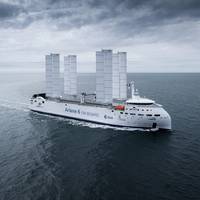
If the global commercial fleet reduced its speed by 10%, it would reduce underwater radiated noise by 40%, but nothing’s ever that simple.The main thing holding the shipping industry back from reducing its underwater radiated noise (URN) is not a lack of appropriate technology. It’s argued that many of the technologies being implemented today to reduce fuel consumption also reduce noise. So, the noise reductions could essentially come at no net cost to the shipowner, but there’s a lack of regulation and a lack of targeted incentives…
Future Proof Shipping Converting Second Vessel to Run on Hydrogen

Future Proof Shipping's inland container vessel FPS Waal has arrived at Holland Shipyards Group's yard in Werkendam, the Netherlands for the start of its conversion to enable operations on zero-emissions hydrogen power.Building upon the foundation laid by Future Proof Shipping's previously converted FPS Maas—now H2 Barge 1—all the vessel’s internal combustion engines will be removed and a new fully zero-emissions propulsion system, including PEM fuel cells, hydrogen storage, battery packs and an electric drive train will be installed.
Geir Bjørkeli to Step Down as CEO of Corvus Energy

Geir Bjørkeli has decided to step down as CEO of marine battery solutions provider Corvus Energy.He will continue in his position until at the latest December 31st 2023, ensuring a seamless transition to new leadership.Bjørkeli said: "After leading Corvus for five and a half years, I believe it is time for the company to have a new leader. Together with the rest of the team, I have dedicated extensive efforts to elevate Corvus into a prominent green industrial company within the maritime sector.
Corvus Energy CEO Resigns

Geir Bjørkeli has made the decision to step down from his role as CEO of Corvus Energy. However, he will continue in his position until at the latest December 31, 2023."After leading Corvus for five and a half years, I believe it is time for the company to have a new leader. Together with the rest of the team, I have dedicated extensive efforts to elevate Corvus into a prominent green industrial company within the maritime sector. The company continues to experience significant growth, with supply issues resolved post-pandemic and record-high order intake.
Austal USA Awarded US Navy TAGOS-25 Contract
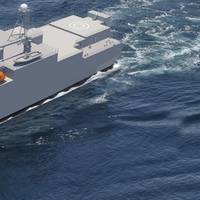
Mobile, Ala. shipbuilder Austal USA announced it has been awarded a contract potentially worth more than $3 billion for the detail design and construction of new TAGOS-25 class ocean surveillance ships for the U.S. Navy.The $113.9 million fixed-price incentive (firm target) and firm-fixed-price contract includes options for detail design and construction of up to seven T-AGOS 25 class ships which, if exercised, would bring the cumulative value of the contract to $3.195 billion.Austal…
Corvus' Hydrogen Fuel Cell System Gets AIP from DNV

Corvus Energy announced its hydrogen fuel cell system developed through the H2NOR project has received approval in principle (AIP) from classification society DNV for its safety solution enabling simplified placement of the system inside a ship’s hull.According to Corvus, the fuel cell system (FCS) is the first designed to be inherently gas safe, meaning that the surrounding machinery space will be considered gas safe under all conditions. This design reduces the number of requirements for the safety and ventilation support systems…
Ammonia Fuel Cells for Deep-Sea Shipping: A Key Piece of the Zero-emissions Puzzle
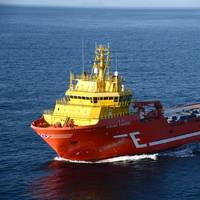
Interest in ammonia-powered fuel cells for the maritime sector is growing, but stakeholders have been hesitant to commit to investments in large-scale systems. Now the ShipFC project is aiming to secure a place for ammonia in the future of deep-sea shipping.The project will equip the offshore supply vessel Viking Energy, owned and operated by Eidesvik and on contract to energy major Equinor, with a 2-megawatt (MW) ammonia fuel cell, allowing it to operate for at least 3,000 hours annually on clean fuel.
ENGINEERING: Inter-Compartment Sound Transmission Regulations and Testing
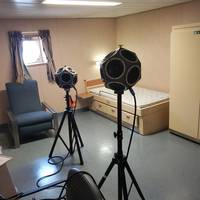
Complying with International Maritime Organization Resolution MSC.337(91) Noise Level CodeOne of the best things a marine operator can do for its crew or passengers is prioritize their comfort by reducing shipboard noise. Commercial and military marine vessels can be subject to very high noise levels produced by everything from onboard activities to aircraft. At worst, this noise can be hazardous—disruptively noisy environments can lead to discomfort, sleep-deprivation, and even hearing loss, which can in turn lead to lower job performance, safety risks, and diminished quality of life.
Hydrogen Ferry Project Gains $9.4 Mln in Funding
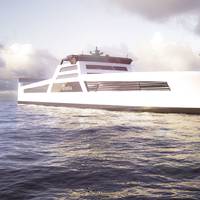
A project to produce a novel emissions-slashing hydrogen passenger ferry has been granted €8 million ($9.4 million) in European funding as the Norwegian government announces strengthened focus on development and commercialization of hydrogen as a carbon-neutral fuel.The HySHIP project involves 14 European partners collaborating on the design and construction of a new ro-ro demonstration vessel running on liquid green hydrogen (LH2), as well as the establishment of a viable LH2 supply chain and bunkering platform.
Mitigating Underwater Noise
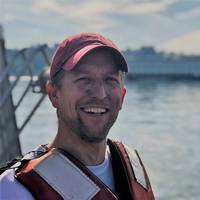
Noise Control Engineering, LLC (NCE) recently completed an underwater radiated noise study for Washington State Ferries (WSF), a study which entailed measurement of nine vessels representing all seven operating classes of WSF vessels, quantifying noise, potential impacts to orcas and other marine life, and methods of reducing noise.“With the increasing awareness of underwater noise impacts on marine life, both globally and locally in the Northwest, WSF is interested in learning more about how their operations may impact marine life,” said Jesse Spence, President, NCE.
Underwater Noise Study Completed for Washington State Ferries
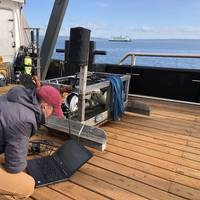
A Massachusetts-based acoustical engineering consulting firm recently completed an underwater radiated noise study to quantify noise, potential impacts to orcas and other marine life, and methods of reducing noise for Washington State Ferries (WSF). Noise Control Engineering (NCE), a subsidiary of naval architecture and marine engineering firm Glosten, said its study included measurement of nine vessels representing all seven operating classes of WSF vessels. The firm specializes in noise and vibration design…
World First Full Scale 'Ammonia as Fuel' Marine Four-Stroke Engine Test
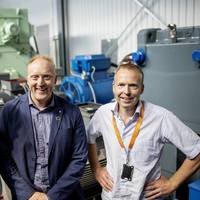
While there is no consensus on the marine industry ‘fuel of the future’ that will meet ever tightening international emission mandates, a group of organizations has commenced what it is calling the world’s first long-term, full-scale, testing of ammonia as a fuel in a marine four-stroke combustion engine. Wärtsilä, Knutsen OAS Shipping AS, and Repsol, and the Sustainable Energy Catapult Center, have teamed for the effort, as ammonia offers promise as a carbon-free fuel for marine applications…
Equinor, Eidesvik in Ammonia-Fueled PSV Pact
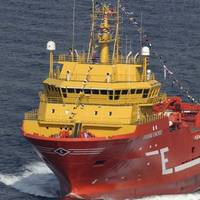
Norwegian oil company Equinor has signed a deal with vessel owner Eidesvik Offshore to test the use of carbon-free ammonia as a fuel aboard the Viking Energy platform supply vessel.Equinor has awarded Eidesvik Offshore a five-year contract with effect from April 2020, when the current contract for the vessel expires. The Viking Energy supply vessel will in the contract period be part of a research project developing, installing and testing long-distance sailing fuelled by carbon-free ammonia fuel cells.
Shipbuilding: Norway’s Fjellstrand Rewrites the Book
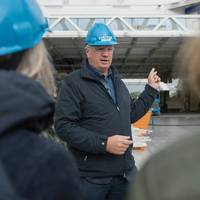
As maritime digests a number of historical changes, Norway’s Fjellstrand shipyard wants to put aside the rule book and look at the whole process in a new way, reducing engineering costs up to 70% and production costs up to 20%.The process of designing and building a ship, even in today’s highly standardized mass manufacturing environment, remains largely a one-off, one-of-a-kind design and build. Ships are most often built to a shipowner’s or operator’s specific requirements, which are often based on fixed parameters such as speed…
Catching Cruise Off-Guard: Norway’s zero-emissions fjord cruises
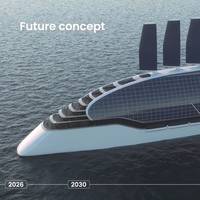
Norway on Jan. 1, 2026, will begin a ban on cruise ships powering through the Unesco-listed heritage fjords on anything but zero-emissions propulsion. For now, that means battery power, but few of the 190 cruise ship calls to these fjords are made with that kind of electro-chemical fuel on board. From now until 2026, you can still cruise the fjords on a closed-loop, or in-line, scrubber system, but few cruise ships have these installed. The new rules mean cruising elsewhere, finding…
World-First: Hydrogen-powered Push Boat
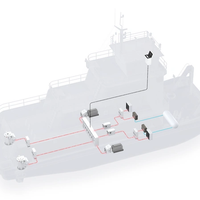
A new vessel being built to operate along the Rhône river in France will be the world's first push boat to run entirely on hydrogen fuel cells.The newbuild for the France-based Sogestran Group subsidiary Compagnie Fluviale de Transport (CFT) is due for delivery in 2021 and will feature a fuel cell based power and propulsion solution from ABB through its role in FLAGSHIPS, the EU-funded initiative to deploy commercially operated zero-emission vessels for inland and short sea operations.
FLAGSHIPS to Deploy Two Hydrogen Vessels
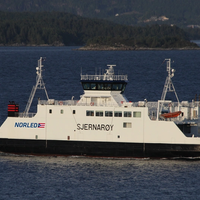
The European project FLAGSHIPS was awarded $5.6m from the EU to support deploying two commercially operated zero-emission hydrogen fuel cell vessels in France and Norway.The FLAGSHIPS project contributes in building two new build vessels, one in Lyon, France and one in Stavanger, Norway. In Lyon, a hydrogen push-boat operated by Compagnie Fluvial de Transport (CFT) will serve as a utility vessel on one of its most demanding rivers, the Rhône. In Stavanger, hydrogen is intended…
Shipbuilding: Rewriting the Book
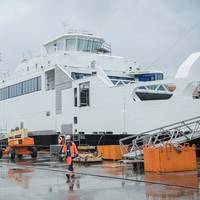
As maritime digests a number of historical changes, Norway’s Fjellstrand shipyard wants to put aside the rule book and look at the whole process in a new way, reducing engineering costs up to 70% and production costs up to 20%.The process of designing and building a ship, even in today’s highly standardized mass manufacturing environment, remains largely a one-off, one-of-a-kind design and build. Ships are most often built to a shipowner’s or operator’s specific requirements, which are often based on fixed parameters such as speed…
OSV Cuts Costs with new Energy Storage Solution
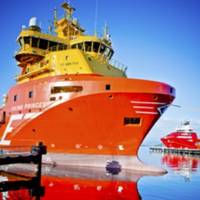
Eidesvik’s offshore supply vessel (OSV) Viking Princess reportedly can now operate with only three generators instead of four after a retrofit of an energy storage solution with The Switch DC-Hub at its heart, helping the 5,381 GWT ship to save around a ton of fuel every day.The solution entails replacing one of the main generators of Viking Princess by batteries connected to a DC-Hub. This energy solution allows the shipowner to reduce the operating costs, fuel consumption and emissions associated with the previous generator that is no longer needed.According to Asbjørn Halsebakke…
Corvus Energy Expands
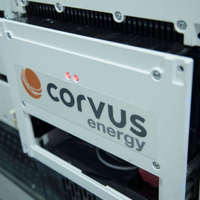
Corvus Energy, manufacturer of energy storage systems for maritime applications, announced two production and R&D expansion plans underway in Canada and Norway. The new battery factories will be more modern and more automated than other similar factories, result in eight times the production capacity compared to today.First, the Corvus Energy factory in the Vancouver, Canada region will be expanded and upgraded to house a 200 MWh semi-automated battery production facility. A new product R&D, design and engineering facility will also be developed.
New Center to Advance Green Maritime Tech in Norway
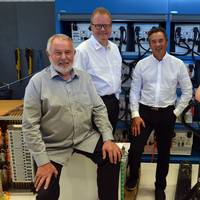
NCE Maritime CleanTech business cluster is establishing a new Norwegian catapult center to build up expertise and testing facilities for its partner organizations. The center aims to be at the forefront in making the Norwegian marine industry greener, smarter and more innovative.NCE Maritime CleanTech’s initiative Sustainable Maritime Norwegian Catapult Center was announced as one of the three winners among the 15 business clusters that applied to Siva, the Industrial Development Corporation of Norway, to fund a new catapult arrangement.
USS Wasp Joins 7th Fleet
The amphibious assault ship USS Wasp (LHD 1) entered U.S. 7th Fleet area of operations Jan. 6 after completing nearly two months of disaster relief efforts in the Caribbean Sea. Wasp departed Norfolk Aug. 30 to replace USS Bonhomme Richard (LHD 6) in Sasebo, Japan as the forward-deployed amphibious assault ship in region. While still in the initial phase of its transit, the ship diverted to the Caribbean on Sept. 4 to assist the U.S. Virgin Islands and Dominica in the wake of Hurricane Irma and then provided assistance to Puerto Rico following Hurricane Maria, a Category 5 storm regarded as the worst natural disaster in the history of the American commonwealth island. In support of relief efforts, Wasp aircraft flew 108 missions on the U.S.
Spence Takes over as Noise Control Engineering President

Glosten subsidiary Noise Control Engineering, LLC (NCE), a Massachusetts-based acoustical and structural engineering consultancy, said it has appointed Jesse Spence as its next president. As NCE president, Spence will have direct responsibility for organizational processes, market assessment and business development. He accepts this position after serving as NCE’s director of technology. Spence joined NCE in 2001, having led the firm’s efforts to develop and implement technologies and techniques to facilitate solutions to marine acoustic and vibration problems.







